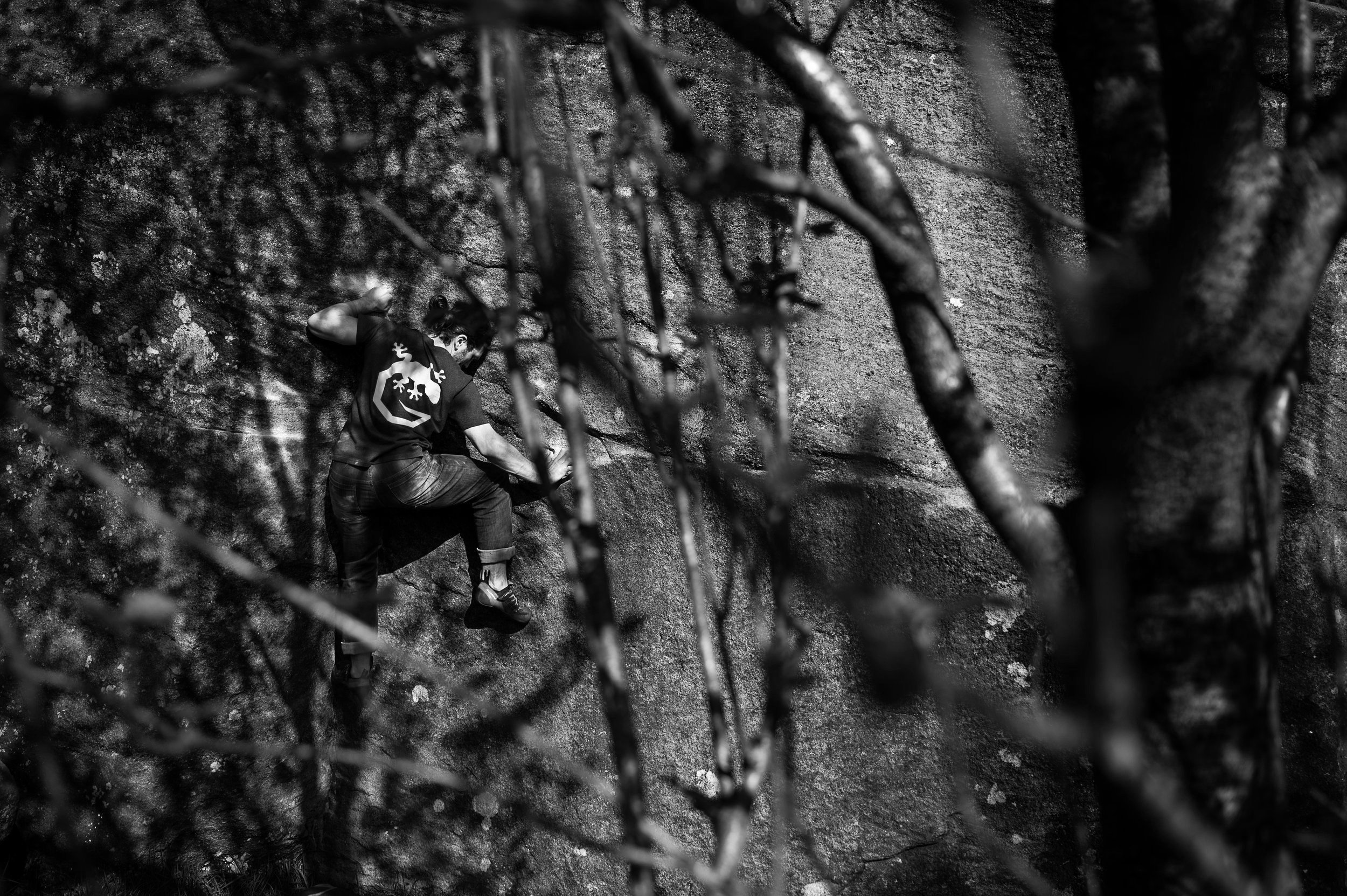
How to be a Greener Climber
A short list of tips to help you become a more sustainable climber

As climbers we depend on nature to support our passion. having respect for our environment is crucial if we’re to climb in a sustainable manner.. Everything we do will have an impact, so how can we limit this?
We’ve put together some tips on how you can be a greener climber, check it out below!
-

Rekindle a love for your local crag.
Save on carbon emissions by choosing to visit your local crag over travelling long distances! Whether you’re lucky enough to live near the Peak or not, there are often some real esoteric gems on your doorstep which get overlooked. These crags often go unloved by the majority because they don’t have hundreds of lines within walking distance. Ask yourself though, how often do you get more than 15-20 climbs done in day? Local blocs are often quieter and provide a variety of experiences. Clearly at some point though, the need to travel will arise, you are going to want to visit other crags, which brings us to the next point.
-

Lift Share.
When climbing either indoors or outdoors, try to find a group to share the ride with. Especially if you’re already going as a group, see if someone can take you all together. If you are heading out for a crag day further afield, this is especially important as you could make a huge carbon saving with four people in one car as opposed to four cars!
-

Consider cycling.
Instead of driving to your local wall or crag, consider whether it's close enough to cycle. This way you can reduce your carbon footprint as well as warming up for your session! Once you have a bike, the opportunities for reducing your footprint are endless!
-

Consider buying two pairs of shoes.
Resoling is a good option for increasing the lifetime of your climbing shoes, you can extend this even further by owning two pairs of shoes. One pair with a stiffer rubber which is usually less aggressive and sticky. Use this one for mileage, warm-ups and practising on easier problems. Your second pair would then usually be a softer and more aggressive shoe that you use for your harder climbs and projects. This way you won’t burn through softer (and more expensive!) climbing shoes as quick, reducing how often they need to be replaced and saving you some cash.
-

Purchase from ethical and sustainable brands.
With the recent push for sustainability within our society, more and more businesses are popping up that place importance on sustainability and care from the environment. It is slowly becoming easier to be a responsible consumer within the climbing industry. Here are some indicators you can look out for when determining whether a brand is working toward sustainability:
Packaging - is all their packaging 100% recyclable or home compostable? But be wary of compostable packaging as this often has to go through an industrial process in order to break it down, rather than in a home compost heap.
Supply chain and materials - do they showcase their suppliers or methods as sustainable and ethical? Do they choose materials that are sustainable and recyclable? For example, wooden brushes with organic bristles rather than using plastic
Action and initiatives - have they implemented any projects or initiatives that give back to society or the environment?
-

Brush your holds and tick marks.
Make sure you brush your holds before and after climbing. This helps keep the rock clean, increasing friction and returning it as close to its original condition as possible. Also by brushing off holds and tick marks, you allow the following climbers the chance to read the route themselves which is half of the fun! Avoid using wire brushes on rock as this could damage it.
-

Single use items.
Make sure you always have your own reusable water bottle or coffee cup when you go to the climbing wall or crag to save from buying single use plastic bottles or coffee cups. Pack homemade food and drinks for crag days to avoid purchasing single use items while away in order to save on packaging. Cutting down on single use items will massively reduce your waste output and carbon footprint.
-

Take your litter home.
When you visit the crag, anything you take with you should also leave with you. Follow “Leave No Trace” ethics to keep our crags and the environment safe! If you want to go the extra mile, bring some bags and do a clean-up to make the area more enjoyable for others.
-

Apparel.
Buy the correct clothing! Hard wearing sports-focused clothing will last a lifetime if it’s looked after. Function over fashion.
-

Climbing Holidays.
For climbing holidays abroad, really try to make use of the time you’re there. Spending 2-4 weeks in a location once a year vs 4 x 1 week holidays is much less intensive on your carbon footprint. Consider whether you could drive rather than flying. Driving to France is feasible if you live relatively close to the Eurotunnel.

